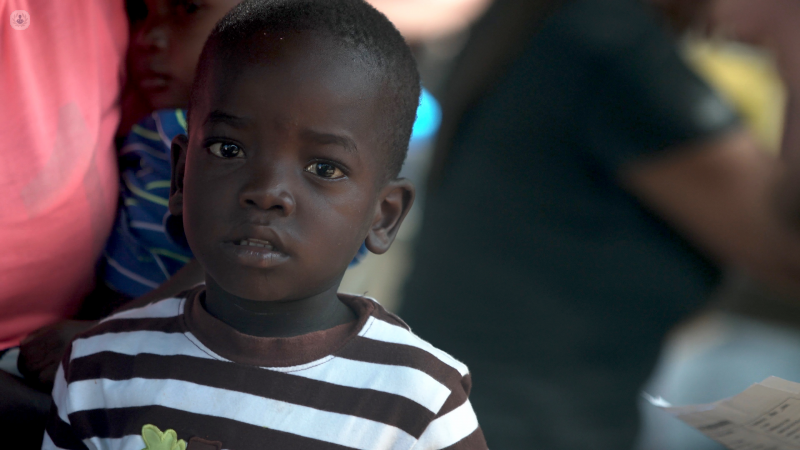Hydrocele treatment: does my child need surgery?
Escrito por:Hydroceles are a build-up of fluid around the testicle that can affect young boys. While not usually painful, swollen scrotums should always be checked out. How do you treat a hydrocele? We asked leading paediatric urologist Mr Andrew Robb.

Is a hydrocele dangerous?
No, a hydrocele is not dangerous.
It may be a symptom of an underlying condition which does need treatment – especially in adolescents.
What can be done about a hydrocele?
When you go and see a specialist about a hydrocele in a child, they will take a full history and examine the child. This is to ensure your child does indeed have a hydrocele. Other conditions such as inguinal hernias may mimic a hydrocele and the way they are treated may be different.
If your doctor cannot feel the testicle in a hydrocele, they may order an ultrasound scan of the scrotum and testes. This is to ensure that there is no problem with them.
The treatment of the hydrocele depends on the age of the young person.
If the child is less than three years old, then you can give the hydrocele time to resolve itself.
Once a child reaches the age of three, you can either continue to observe the hydrocele to see if it goes away by itself or you can consider surgery.
What does hydrocele surgery involve?
In children under the age of 12, the operation is called a ligation of PPV (patent processus vaginalis – the open tube through which the testicles originally descended).
It involves the young person being admitted as a day case to hospital. The surgery is done under a full general anaesthetic. A cut is made in the groin over where the PPV (the connection between the tummy and the scrotum) is located. It runs with the blood vessels and sperm tube (vas) to the testicle. These blood vessels and sperm tube are separated from the PPV and the PPV is closed. The incision is then closed with buried dissolving stitches.
The surgery takes less than 30 minutes to do once the young person is asleep, if there are no problems.
Like all operations there are risks. The risks include:
- Bleeding
- Infection
- Injuring the sperm tube or the blood vessels to the testicle – this does not happen very often, as the blood vessels and sperm tube are well developed and robust structures by the time that you consider surgery for a hydrocele. If it does happen, however, it can result in the testicle on that side not surviving.
- The hydrocele coming back
For boys who are 12 or older the treatment is slightly different. The first thing that your doctor will do is to ensure that there is no abnormality with the testicle on the side with the hydrocele.

The surgery for an acquired hydrocele is different to that of a hydrocele in a young child. The operation is called a Jaboulay procedure. It is done as a day case procedure under a full general anaesthetic. It involves making a small cut on the scrotum, on the side of the hydrocele. The hydrocele is opened and the fluid drained. The layer of tissue that forms the hydrocele is everted to stop the hydrocele from coming back. The risks of this procedure are small, but include bleeding, infection, pain in the testicle afterwards and the hydrocele returning.
If the hydrocele does come back, then it may be because of a connection between the scrotum and the tummy. This may need a ligation of PPV to treat it.
Visit Mr Robb’s Top Doctors profile to book an appointment.


